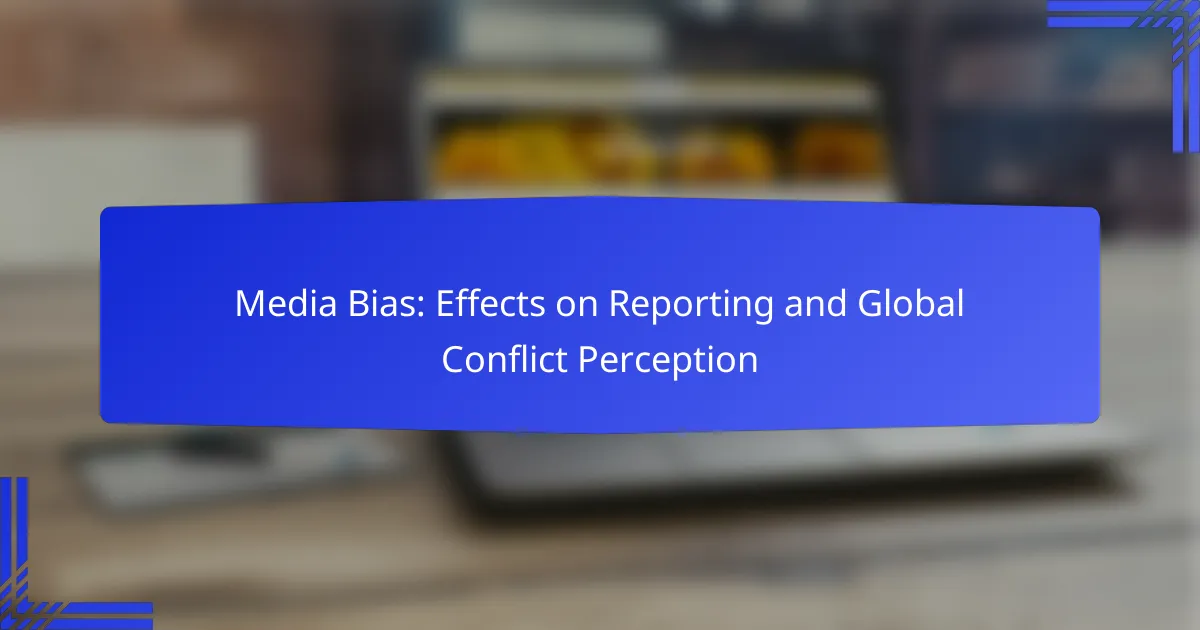Media bias plays a crucial role in shaping public perception of global conflicts, often leading to distorted narratives that influence emotional responses and policy decisions. By selectively presenting information, news organizations can create a skewed understanding of events, making it essential for consumers to critically evaluate the sources and media coverage of international conflicts present in reporting.
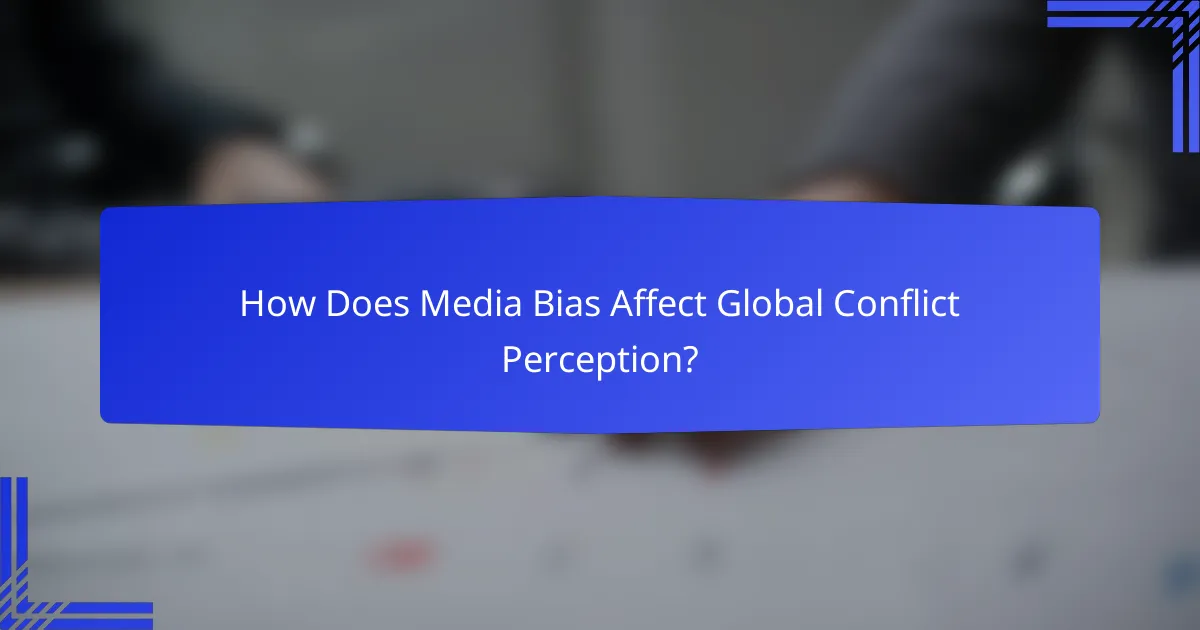
How Does Media Bias Affect Global Conflict Perception?
Media bias significantly shapes how global conflicts are perceived by audiences, influencing their understanding and emotional responses. By selectively presenting information, media outlets can create skewed narratives that affect public sentiment and policy decisions.
Influences public opinion
Media bias plays a crucial role in shaping public opinion about conflicts. When certain perspectives are emphasized over others, it can lead to a misinformed public that supports or opposes actions based on incomplete narratives. For example, coverage that highlights civilian suffering in one region while downplaying violence in another can lead to a skewed perception of which side is more culpable.
Moreover, biased reporting can polarize opinions, creating echo chambers where individuals only consume information that reinforces their beliefs. This can hinder constructive dialogue and understanding among different groups.
Shapes narratives in conflict zones
In conflict zones, media bias can dictate the dominant narratives that emerge, influencing both local and international perceptions. For instance, if a media outlet consistently portrays one side as the aggressor, it can shape the international community’s response and humanitarian aid efforts. This selective reporting can also affect the morale of those involved in the conflict.
Furthermore, the portrayal of events can lead to long-lasting stereotypes and stigmas against certain groups, complicating post-conflict reconciliation efforts. Understanding these narratives is essential for comprehending the broader implications of media coverage.
Alters diplomatic relations
Media bias can significantly alter diplomatic relations between countries involved in conflicts. Biased portrayals can lead to misunderstandings and increased tensions, as nations react to how they are represented in the media. For example, if a country is depicted as a villain in a conflict, it may face diplomatic isolation or sanctions from the international community.
Additionally, biased reporting can influence public pressure on governments to take sides in conflicts, further complicating diplomatic negotiations. It is essential for policymakers to critically assess media narratives to navigate these complex international relations effectively.
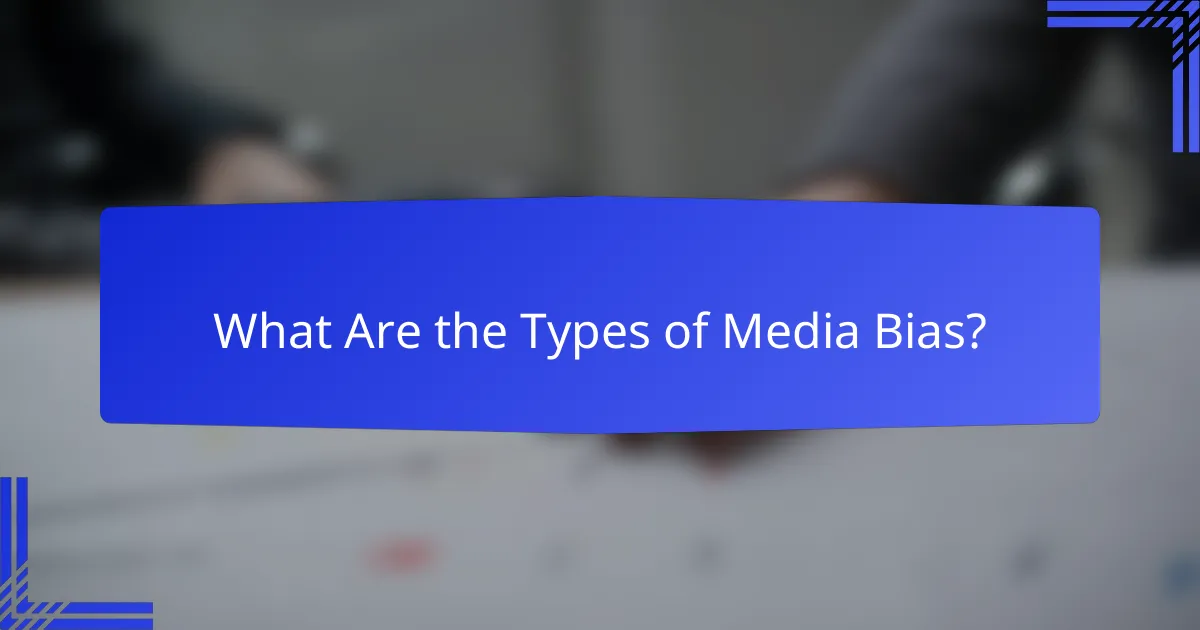
What Are the Types of Media Bias?
Media bias refers to the various ways in which news organizations can present information in a manner that skews public perception. Understanding the types of media bias helps consumers critically evaluate news sources and their reporting on global conflicts.
Selection bias
Selection bias occurs when certain stories or viewpoints are favored over others, leading to an incomplete representation of events. This can happen when media outlets choose to cover only specific incidents or perspectives that align with their editorial stance, leaving out crucial information.
For example, a news channel might focus on violent protests in one region while ignoring peaceful demonstrations elsewhere, skewing public perception of the overall situation. To mitigate selection bias, consumers should seek diverse news sources that cover a wide range of viewpoints and events.
Confirmation bias
Confirmation bias is the tendency to favor information that confirms existing beliefs while disregarding contradictory evidence. This bias can significantly affect how news is reported and interpreted, as journalists may unconsciously select stories that align with their own views.
For instance, a media outlet with a specific political leaning may highlight stories that support its agenda while downplaying or ignoring those that challenge it. To counteract confirmation bias, readers should actively engage with opposing viewpoints and critically assess the information presented.
Framing bias
Framing bias involves presenting information in a way that influences how it is perceived, often by emphasizing certain aspects over others. This can shape public opinion by highlighting specific narratives or contexts that align with the media’s objectives.
For example, a report on a military conflict might frame the situation as a humanitarian crisis, focusing on civilian suffering, while another report might emphasize military strategy and national security. To recognize framing bias, consumers should analyze how different media outlets present the same story and consider the implications of their chosen narratives.
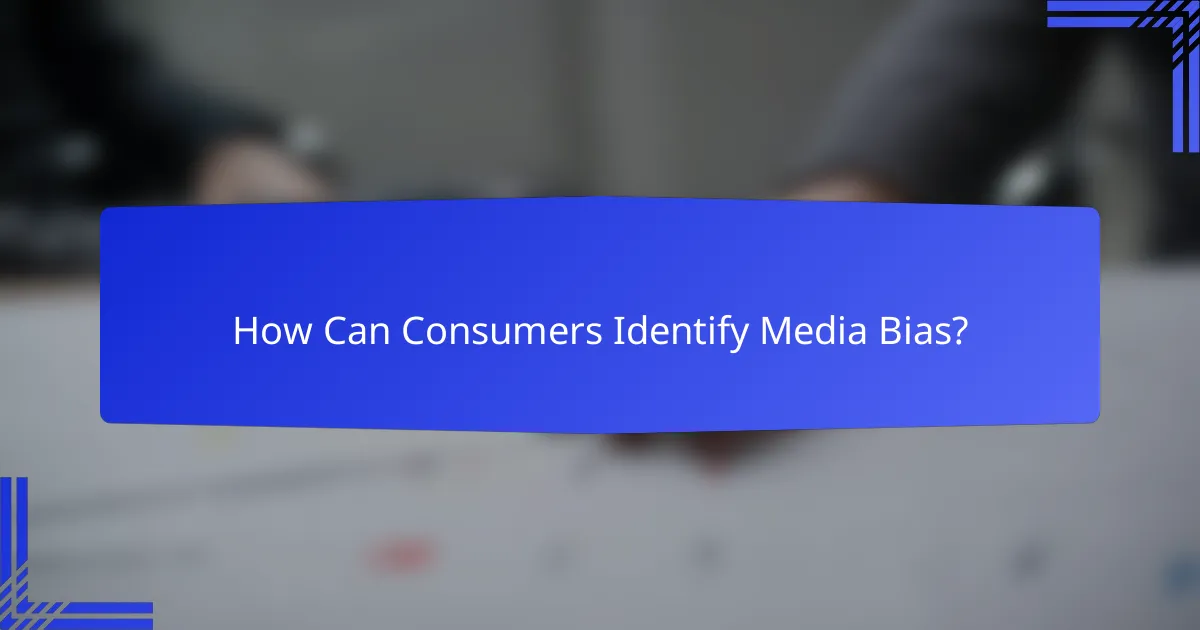
How Can Consumers Identify Media Bias?
Consumers can identify media bias by critically evaluating the sources of information, recognizing potential slants in reporting, and utilizing various tools to assess credibility. Understanding these elements helps in forming a well-rounded perspective on news coverage.
Fact-checking resources
Fact-checking resources are essential tools for verifying claims made in the media. Websites like Snopes, FactCheck.org, and PolitiFact provide independent evaluations of news stories and public statements. Users can quickly check the accuracy of information before accepting it as truth.
When using fact-checking sites, look for the publication date and context of the claims being assessed. This ensures that the information is relevant and accurately represents the current situation.
Cross-referencing news sources
Cross-referencing news sources involves comparing reports from multiple outlets to identify discrepancies and biases. By consulting a range of sources, including international news organizations, consumers can gain a more comprehensive view of events. This practice helps to mitigate the influence of any single biased perspective.
A practical approach is to read articles from sources with differing editorial slants. For instance, comparing a conservative outlet with a liberal one can highlight how different narratives are constructed around the same events.
Understanding media ownership
Understanding media ownership is crucial for recognizing potential biases in reporting. Many news organizations are owned by larger corporations or entities that may have specific political or economic interests. This ownership can influence the editorial choices made by the outlet.
Researching who owns a media outlet can provide insights into its potential biases. For example, if a news source is owned by a conglomerate with known political affiliations, consumers should be cautious about the objectivity of its reporting. Tools like Media Bias/Fact Check can help in assessing the ownership and bias of various outlets.
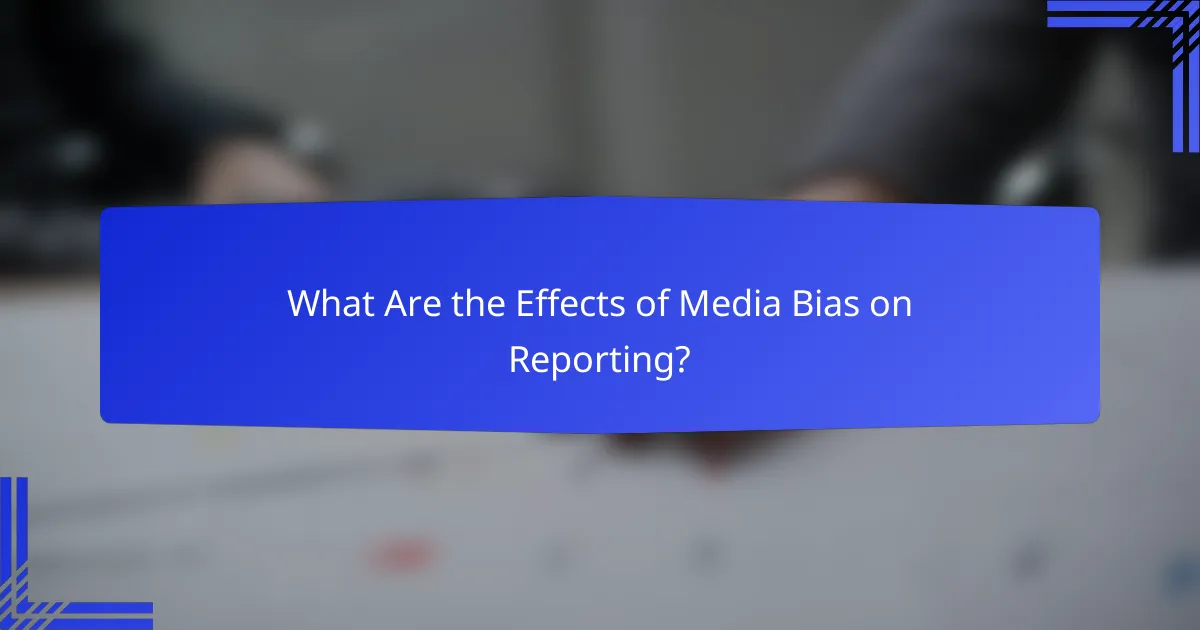
What Are the Effects of Media Bias on Reporting?
Media bias significantly influences how news is reported, shaping public perception and understanding of global events. It can lead to skewed narratives that distort reality, affecting how conflicts are perceived and understood by audiences.
Distortion of facts
Media bias often results in the distortion of facts, where selective reporting highlights certain aspects while downplaying others. This can create misleading impressions about events, such as conflicts, by emphasizing particular narratives that align with the outlet’s agenda.
For example, a news outlet may focus on civilian casualties in one country while ignoring similar events in another, leading to an imbalanced view of global conflict. This selective presentation can misinform the public and skew their understanding of the situation.
Increased polarization
Media bias contributes to increased polarization among audiences, as people gravitate towards sources that reinforce their existing beliefs. This can create echo chambers where opposing viewpoints are dismissed, leading to a fragmented public discourse.
As a result, individuals may become more entrenched in their opinions, making constructive dialogue more challenging. This polarization can exacerbate tensions in society, particularly regarding contentious issues like international conflicts.
Impact on journalistic integrity
The presence of media bias can undermine journalistic integrity, as outlets may prioritize sensationalism or partisan viewpoints over objective reporting. This shift can erode trust in the media, as audiences become skeptical of the information presented.
To maintain credibility, journalists should strive for balanced reporting, fact-checking, and presenting multiple perspectives. Failure to do so can lead to a loss of audience trust and a diminished role of journalism in fostering informed public debate.
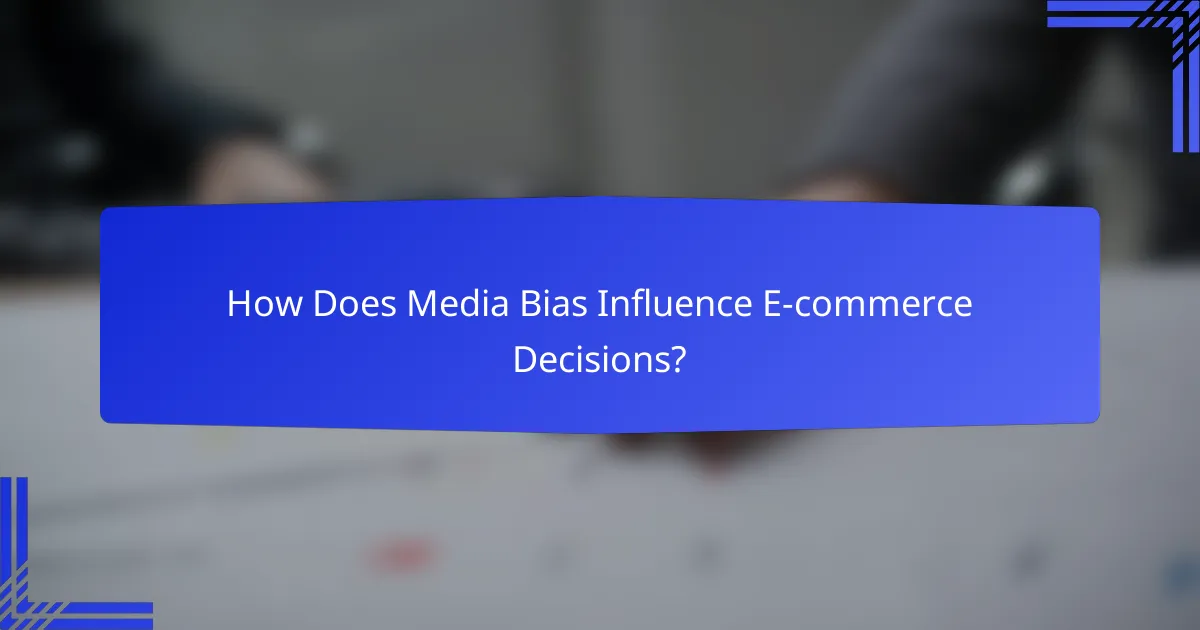
How Does Media Bias Influence E-commerce Decisions?
Media bias can significantly affect e-commerce decisions by shaping consumer perceptions and influencing trust in brands. When media outlets present skewed information, it can lead to misinformed choices and altered buying behaviors among consumers.
Consumer trust in brands
Consumer trust is crucial for e-commerce success, and media bias can undermine this trust. If a brand is portrayed negatively due to biased reporting, consumers may hesitate to purchase from that brand, fearing potential risks or ethical concerns. Brands must actively manage their public relations to counteract negative media portrayals.
To build trust, brands should engage transparently with their audience, providing clear information about their practices and values. This can include sharing customer testimonials and addressing any media claims directly.
Perception of product credibility
Media bias can distort the perception of product credibility, leading consumers to question the quality and reliability of products. When biased reports highlight negative aspects or controversies surrounding a product, it can create doubt, even if the product is generally well-reviewed.
To mitigate this effect, e-commerce businesses should focus on showcasing independent reviews and expert endorsements. Providing detailed product information and encouraging user-generated content can also enhance credibility in the eyes of potential buyers.
Impact on advertising strategies
Advertising strategies must adapt to the influence of media bias on consumer perceptions. Brands may need to shift their messaging to address concerns raised by biased reporting, emphasizing transparency and ethical practices. This can involve crafting campaigns that directly counteract negative narratives.
Additionally, brands should consider diversifying their advertising channels. Relying solely on traditional media may not be effective if that media is perceived as biased. Exploring social media, influencer partnerships, and community engagement can help reach consumers more effectively and restore trust.
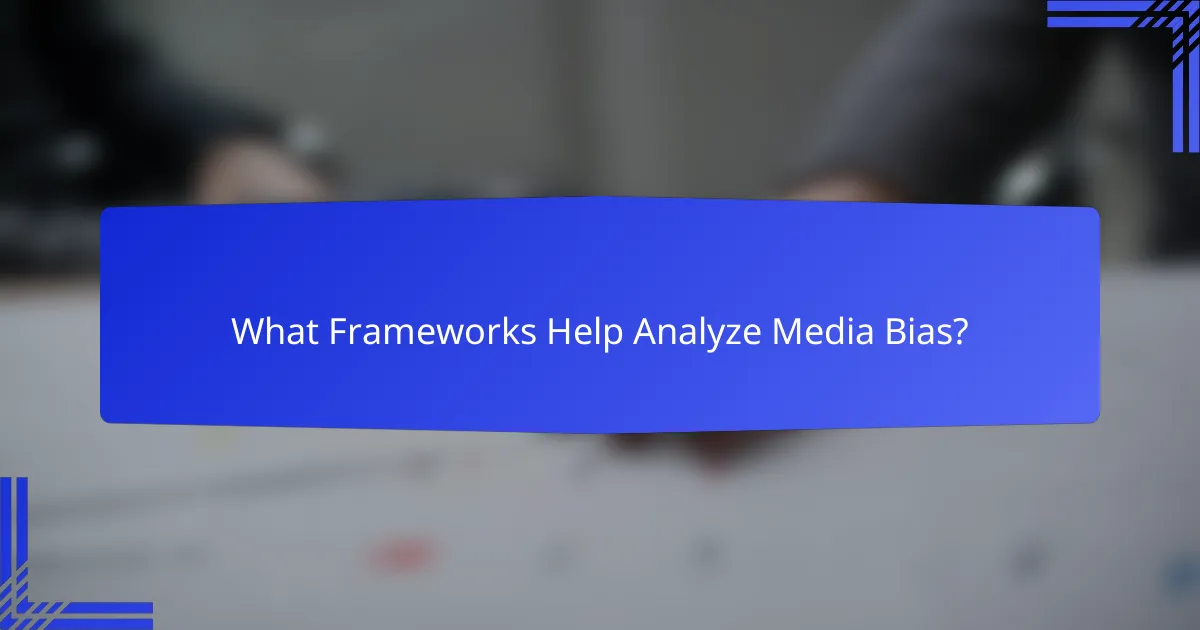
What Frameworks Help Analyze Media Bias?
Several frameworks assist in analyzing media bias, focusing on the sources, presentation, and framing of news stories. These frameworks help identify potential biases in reporting and understand their impact on public perception, particularly regarding global conflicts.
Media literacy programs
Media literacy programs educate individuals on how to critically evaluate news sources and content. These programs often include lessons on identifying bias, understanding the influence of language, and recognizing the role of ownership and funding in media narratives.
For example, a media literacy curriculum might encourage students to compare multiple news outlets covering the same event. This practice helps them discern differences in tone, focus, and omitted details, fostering a more nuanced understanding of the information presented.
To maximize the effectiveness of media literacy programs, participants should engage in discussions about current events, practice analyzing various media formats, and learn to question the motives behind specific narratives. This active approach can significantly enhance critical thinking skills and reduce susceptibility to biased reporting.
